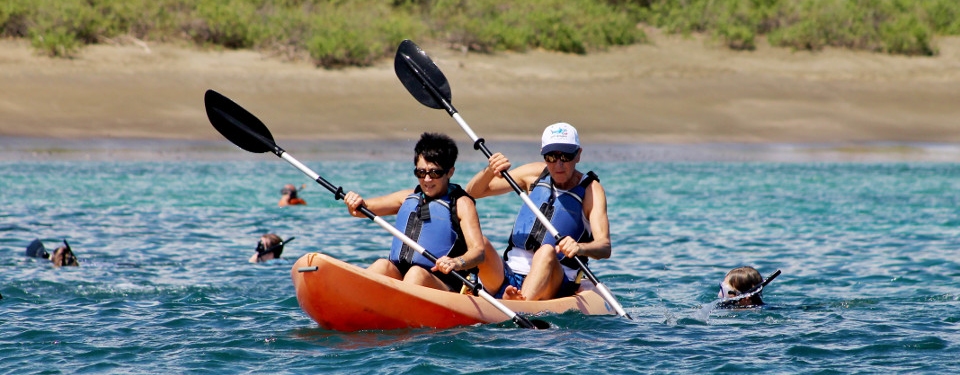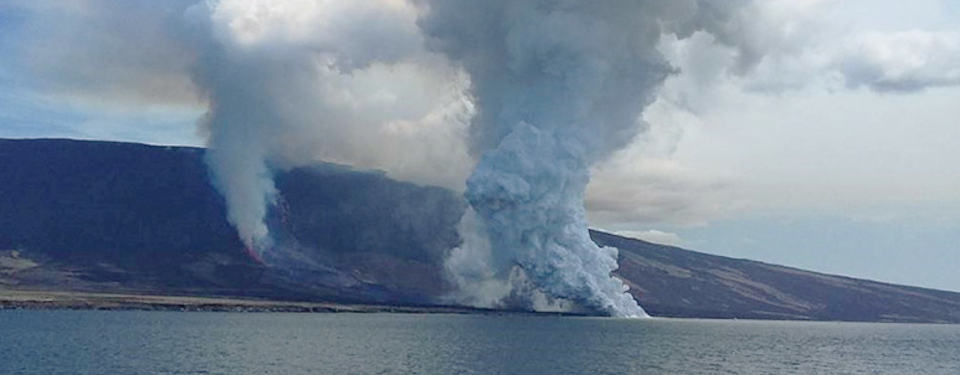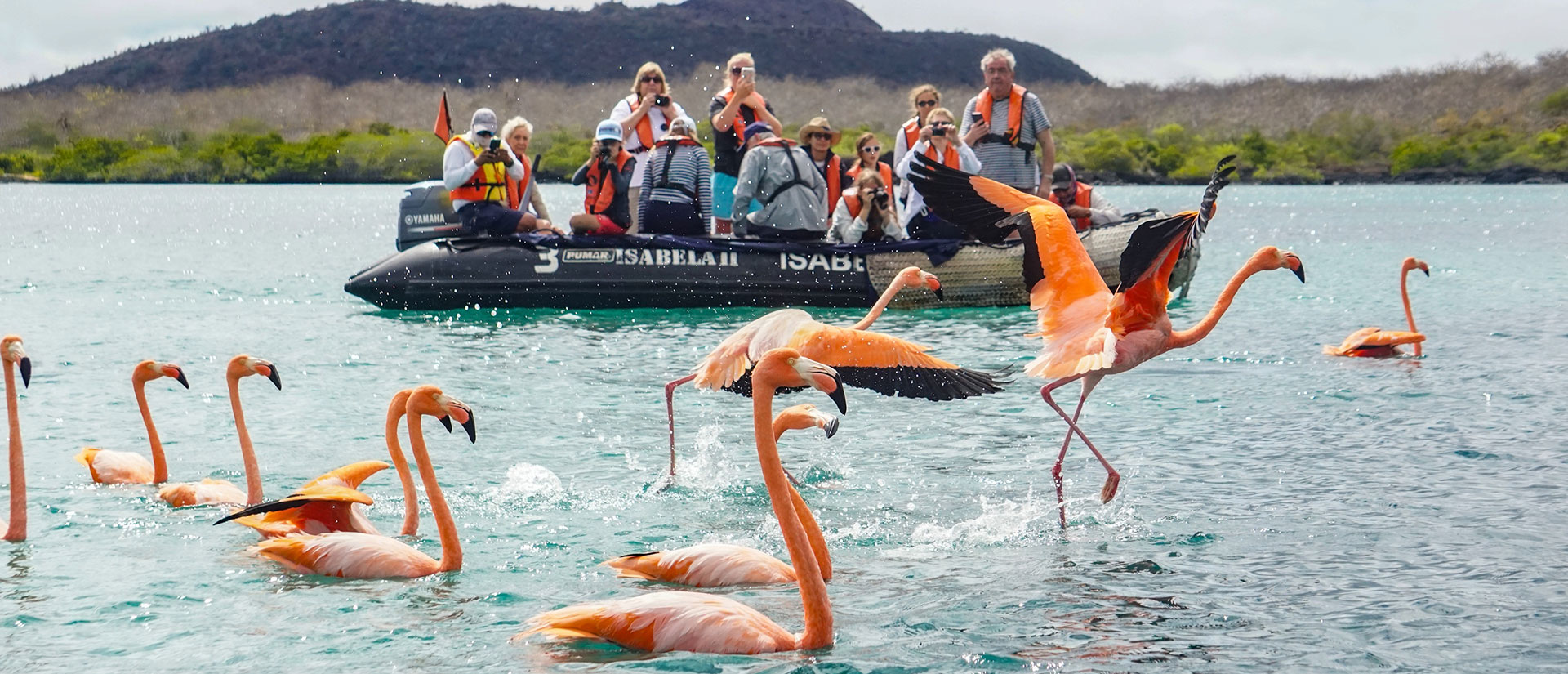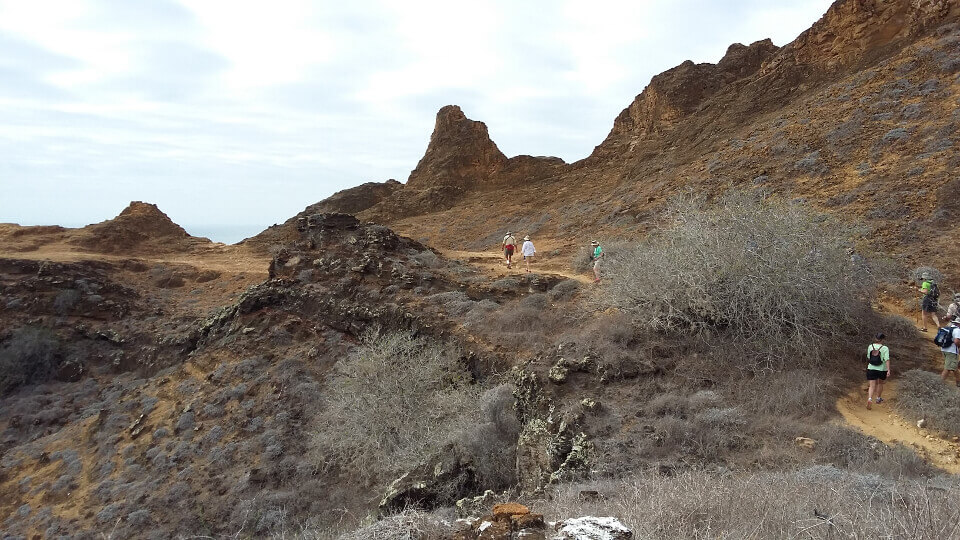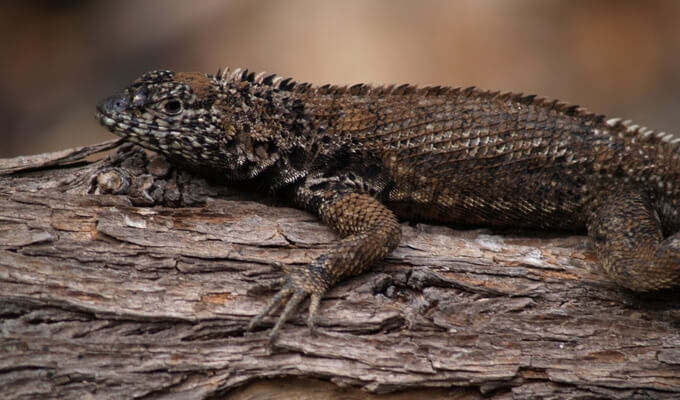
The Galapagos lava lizards creeps among the plants and rock clumps that make up the magical isles, darting in and out of its little alcoves to study the burly giants that bend down to stare at them. They are almost as common as the sea lions of the Galapagos, who appear to frequent every beach in the archipelago, although they are not quite as untouched by human presence as the former. They may freeze and pose for a time, but they exhibit a bit more timidity than the actual sea lions. Throughout the archipelago, they frequently appear to be the only objects moving across the captivating black lava plains.
There are so many of them that, on one of his four island visits and camping trips in 1835, Charles Darwin claimed he could not find a place to set up his tent due to the overwhelming number of lava lizards and land iguanas.
Even though they are so little, lava lizards in the Galapagos usually have no fear of humans; yet, they may be rather possessive of their own species. Lava lizards demonstrate their might by rising and falling parallel to the ground, a funny little move that looks like “push-ups.” Males generally employ this to defend their encircled area, which is normally populated by females. If it doesn’t resolve the conflict, there is a chance that bites and/or tail slapping will occur.
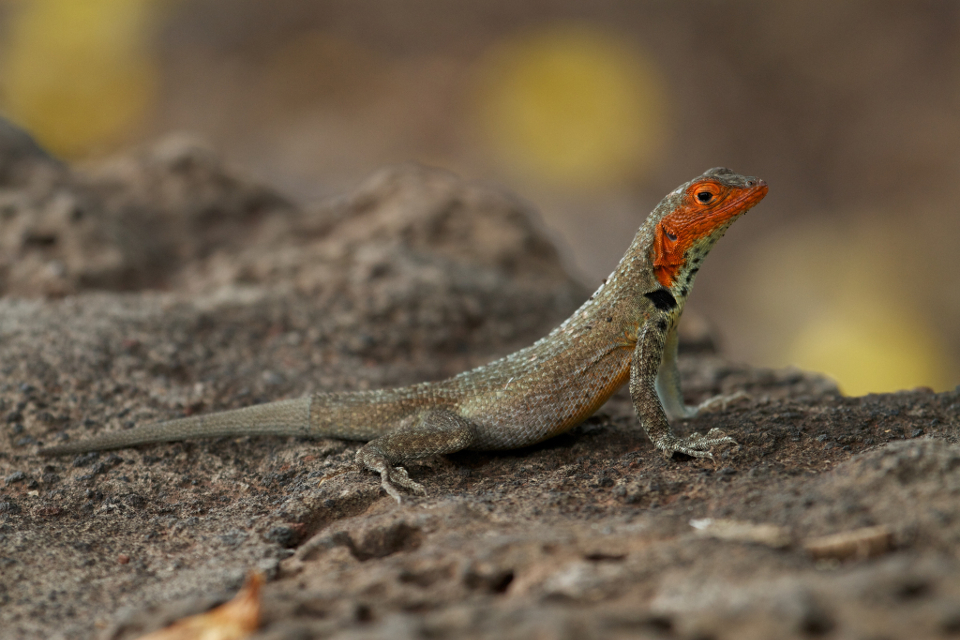
Galapagos Lava Lizard
They use the most basic of defense strategies, camouflage, to assist shield themselves from predators. When the temperature changes or they feel threatened, lava lizards have been seen to alter their color to better fit in with their surroundings. In the unlikely occasion that a predator snags their tails, they also possess the amazing ability to detach it from their bodies. Because disjointed tails continue to wriggle around on the ground after being left behind, they provide an excellent deception for predators. The lava lizards have the benefit of being able to develop new tails.
Furthermore, don’t allow their little stature detract from their significance on the islands! The locust, moth, fly, beetle, spider, and ant populations are among the many insects that depend on these little creatures to stay at reasonable numbers. Galapagos lava lizards have been seen to consume dry vegetation, which adds diversity to their diet. This indicates that the Galapagos lava lizard is extraordinarily resilient to such abrupt shifts in weather patterns during occurrences like El Niño.
On the other hand, these little organisms provide as an excellent illustration of his idea of evolution by natural selection. Evidence has been discovered by science that suggests the seven lava lizard species in the archipelago may have all descended from a single parent species. The form, color, and behavior of the Galapagos lava lizards differ only slightly when compared side by side under close inspection. Because every species lives on a distinct island, it seems likely that they all developed separately and were formerly isolated from one another by impassable physical barriers that now exist, allowing them to procreate apart. For this reason, you may come across a variety of lizard species on a same tour.
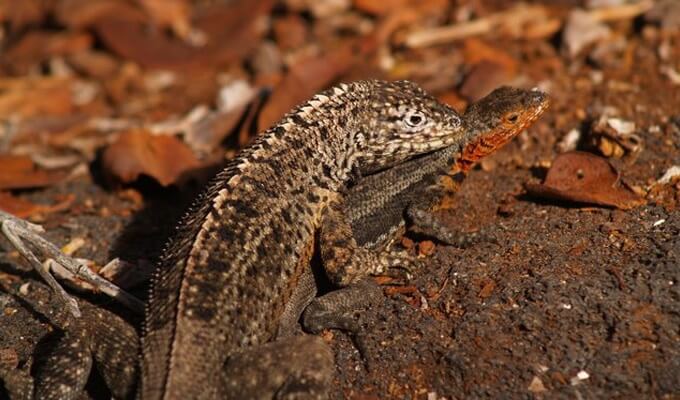
Lava Lizards Are The Most Abundant Reptiles In The Galapagos
Remarkably, the whole Northern and Central regions of the archipelago are home to the seventh species of lava lizard. Why? There are others who suggest that there was a time when the water levels were lower and the archipelago’s cluster may have been connected. Since they developed throughout a wide region of the archipelago that eventually gave rise to several distinct islands, it is thus not entirely implausible to entertain the possibility that this seventh species also originated independently. The whole list of lava lizard species is shown below:
With their long tails, pointed heads, and slim bodies, Galapagos lava lizards resemble athletic, sleek versions of land iguanas. Furthermore, their “paint job” is more fascinating. Although it can be challenging to distinguish between the seven lizard species, it is advantageous that each distinct species is limited to its own island (with the exception of the western and central ones). Due to their tiny size, lava lizards often cause people to double check if they are indeed seeing one instead of a stray leaf or fallen twig.
Additionally, their dynamic hues frequently vary not just across species but even within them, making them ideal for hiding under the island’s vegetation. They might be brown, black, or gray, green, or both. The tourist who spots a lava lizard with captivating copper or gold flecks and stripes is fortunate if they have sharp eyes. The ladies have a crimson throat that is easily distinguishable from the males’ bigger size. While their typical length is usually between 5 and 6 inches, some have been measured to be as long as a foot.
